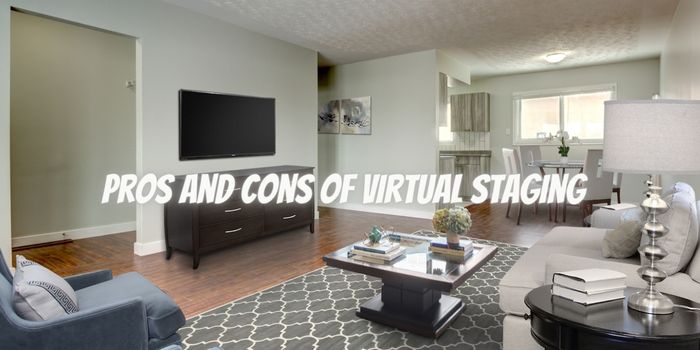Virtual staging is becoming an increasingly popular option for real estate agents and sellers looking to showcase their properties. By using digital software to add furniture and decor to photos of a space, virtual staging can help buyers visualize themselves living in the home and increase the chances of a sale. However, as with any marketing tool, there are both pros and cons to virtual staging. In this article, we’ll explore the advantages and disadvantages of virtual staging to help you decide if it’s worth the investment. Help your buyers visualize how a property would look with virtual staging and other services
Pros of Virtual Staging
Virtual staging has numerous benefits for sellers and real estate agents, making it a popular choice in today’s competitive real estate market.
Cost-effective
Traditional staging can be expensive, with costs that include furniture rental, delivery, setup, and removal. In contrast, virtual staging requires only a one-time fee for the digital rendering, making it a more cost-effective option.
Flexibility
When staging virtually, sellers and agents have the flexibility to make changes to the staging as needed. They can easily switch out furniture, change colors, or even rearrange the layout of the room with just a few clicks.
Faster turnaround time
Traditional staging can take several days to complete, with furniture delivery and setup requiring coordination and scheduling. Staging virtually can be completed in a matter of hours, with the digital rendering delivered electronically to the seller or agent.
Increased buyer interest
It can help generate more interest in a property, as it allows buyers to envision themselves living in the space. This can help increase the number of showings and ultimately lead to a faster sale.
Online appeal
In today’s digital age, many buyers begin their home search online. Virtual staging can make a property stand out in online listings, attracting more attention and potentially leading to more in-person showings.
Accessibility
Virtual staging allows for the staging of properties that are difficult to stage traditionally, such as vacant homes or properties with unique floor plans. It also allows for staging in markets where traditional staging is not as common or readily available.
Consistency
Virtual staging ensures that the property is staged consistently in every photograph, providing a cohesive look that can help attract buyers.
Overall, virtual staging provides several advantages for sellers and agents, including cost savings, flexibility, speed, increased buyer interest, online appeal, accessibility, and consistency. By leveraging the benefits of virtual staging, sellers and agents can more effectively market and sell their properties in today’s competitive real estate market.
Cons of Virtual Staging
Lack of tangibility
Can help buyers visualize a property, but it does not provide the same level of tangibility as traditional staging. Buyers cannot physically touch or interact with the furniture, which may be a drawback for some.
Unrealistic expectations
Can make a property look perfect and ideal, but it may not accurately represent the actual space. Buyers may have unrealistic expectations when they see the staged photos, which could lead to disappointment during in-person showings.
Technical limitations
Requires high-quality photographs and advanced software, which may be costly or difficult to obtain for some sellers or agents. It also requires a skilled graphic designer who can create realistic and appealing digital renderings.
Limited market adoption
Virtual staging is still a relatively new technology and may not be as widely adopted in some markets. This could lead to confusion or skepticism among buyers who are not familiar with it.
Potential misrepresentation
There is a potential for misrepresentation. If the virtual staging is overly dramatic or misleading, it could lead to legal issues or a negative reputation for the seller or agent. This is why many rely on professional services more than DIY.
Overall, virtual staging has its limitations and may not be the best option for all properties or situations. Sellers and agents should carefully consider the potential drawbacks of it and ensure that it is the right choice for their specific needs and goals. By weighing the pros and cons of virtual staging and assessing its potential impact on a property’s sale, sellers and agents can make an informed decision about whether or not to incorporate virtual staging into their marketing strategy.
So, Is Virtual Staging the Worth the Investment?
Ultimately, the decision to invest in virtual staging depends on the specific needs and goals of the seller or real estate agent. Considering its potential impact on a large scale on property sales, sellers and agents can utilize virtual staging in their marketing strategy to save costs. With its ability to help buyers visualize themselves living in a space and its faster turnaround time, virtual staging is a powerful tool for selling a home faster and for a better price.
